Oral and Nasal Cavities Flashcards
1/57
Earn XP
Description and Tags
Flashcards about the oral and nasal cavities.
Name | Mastery | Learn | Test | Matching | Spaced |
|---|
No study sessions yet.
58 Terms
Resonance
Quality of voice determined by the balance of sound vibration in the oral and nasal cavities during speech
Hyponasality
Lack of nasal emission often due to obstruction
Hypernasality
Excess nasal emission, often due to velopharyngeal dysfunction (VPD)
Eustachian tube
Connects the pharynx and the tympanic cavity of the ear to equalize pressure and drain fluid

Frontal Sinus
Located superior to the orbit
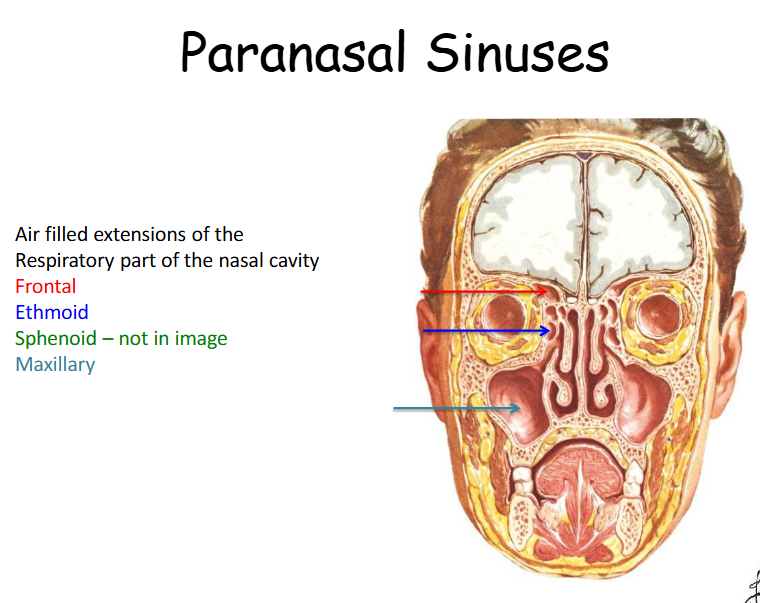
Ethmoid Sinus
Lies medial to the orbit
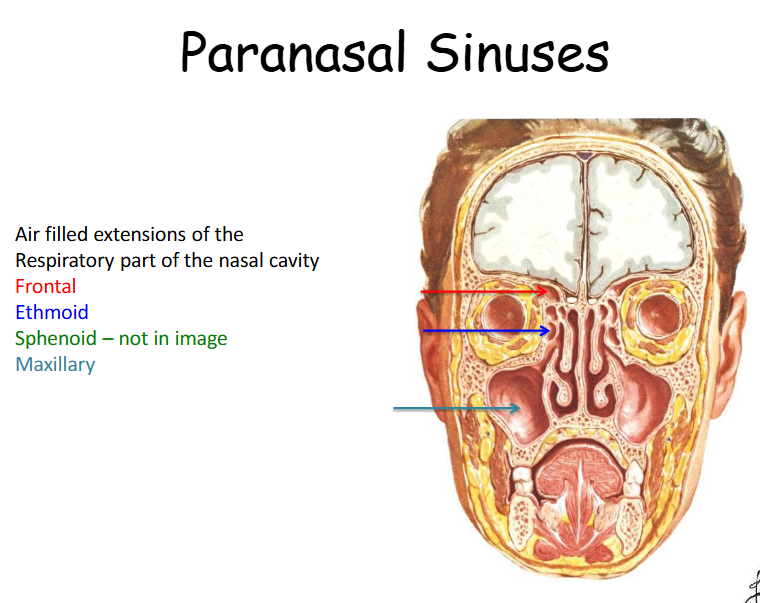
Sphenoid Sinus
Located posterior to the orbit
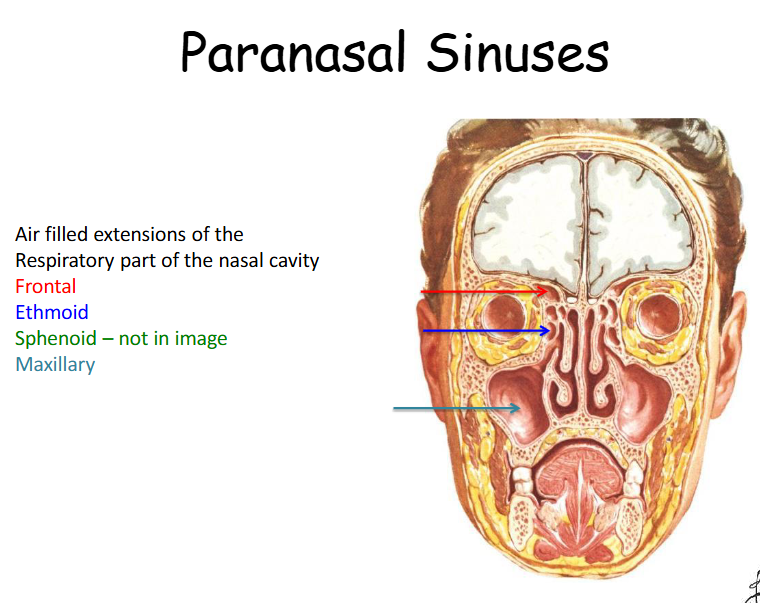
Maxillary Sinus
Located laterally and inferiorly
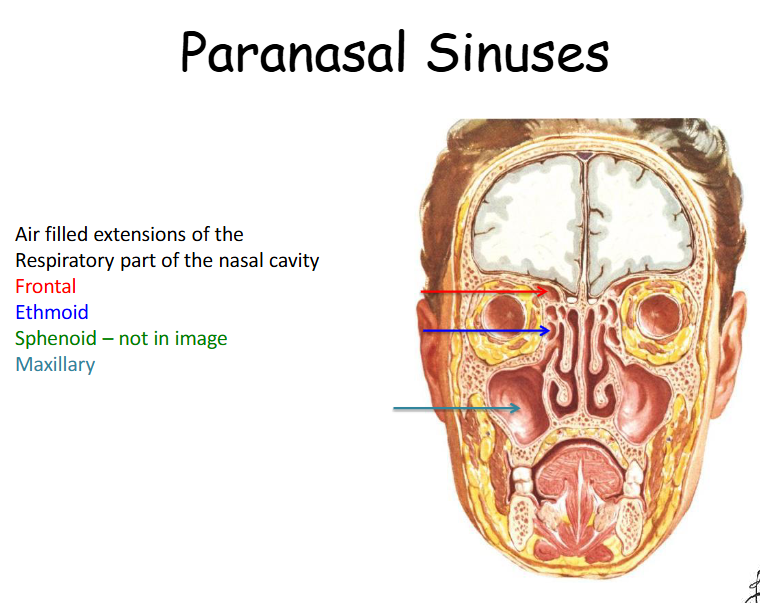
Olfaction
Superior third of the nose
Mylohyoid
The floor of the mouth
Hard Palate
The roof of the mouth
Bulbar Palsy
Impairment of cranial nerves: IX, X, XI and XII
Dysphagia
Difficulty in swallowing
Dysphonia
Defective use of voice
Dysarthria
Articulatory motor disorder (cranial nerves)
What are the 4 paranasal sinuses?
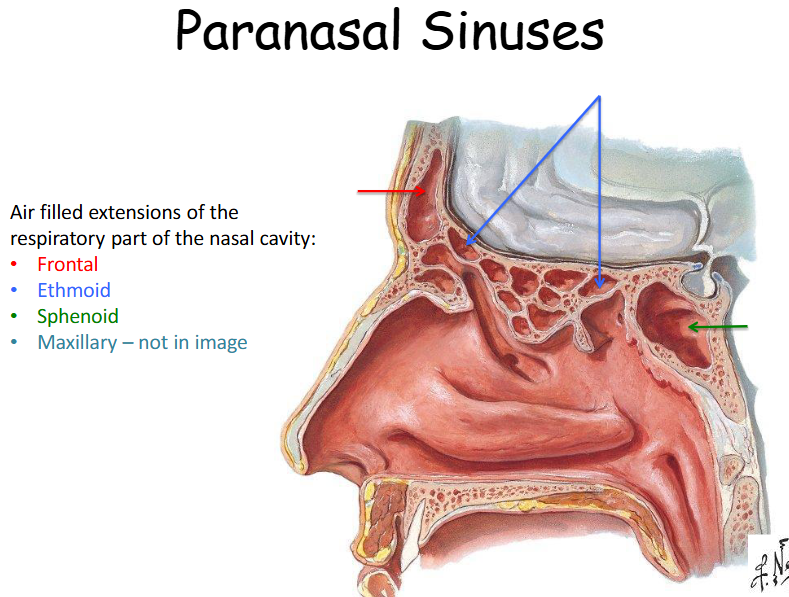
What is the function of the paranasal sinuses?
Thought to reduce the weight of the skull
Because they are an extension of the nasal cavities, air enters them, and they assist in warming and moisturisng the air
How do paranasal sinuses drain?
All drain inferiorly apart from the maxillary sinus that drains superiorly and so has to fill before it drain effectively. When lying on your side one of the maxillary sinus can drain whilst the other remains blocked.
How do sinuses, teeth and other hard skeletal elements affect sound quality?
A sound’s quality is affected by things like the teeth, sinuses and other hard skeletal elements like the hard palate (roof of mouth).
This is because sounds must “bounce” off of hard objects to produce resonance
What happens if the ethmoid sinus gets infected?
It can be quite thin, so if infected can cause the bones to break down and the infection can get into the eye and affect vision
What happens if the maxillary sinus gets infected?
Sinusitis when maxillary sinus blocked it can feel like a tooth ache
Identify the boundaries (including muscles) of the nasal cavity and describe the functions of these regions
The nasal cavity is bounded by several structures and muscles, including the nasal septum, lateral nasal wall, floor, roof, and external nose. Its functions include warming, humidifying, and filtering air; providing a sense of smell; and assisting in speech and nasal breathing.
What are the functions of the tongue
•Respiration
•Olfaction
•Filtration of dust
•Humidification and warming
•Receives secretions from paranasal and nasolacrimal ducts
How does mouth breathing affect your tongue?
Mouth breathing changes the way the tongue works—it develops a “tongue thrust.” A tongue thrust affects speech, swallowing, breathing, and chewing in problematic ways
What is the superior third of the nose responsible for?
Superior third of the nose is responsible for olfaction and the rest is for respiration. Left and right nostrils are separated by the nasal septum
Look at this diagram of the medial wall of the nose

Look at the diagram of the ethmoid bone
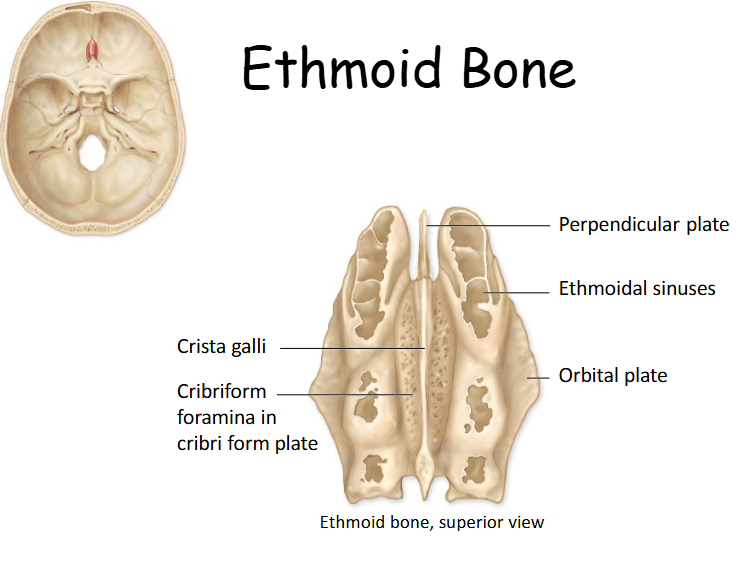
Compare the ethmoid and vomer bone
The ethmoid bone forms part of the skull base and contributes to the nasal cavity and orbits, while the vomer is a thin bone that forms the posterior part of the nasal septum, separating the nasal cavities.
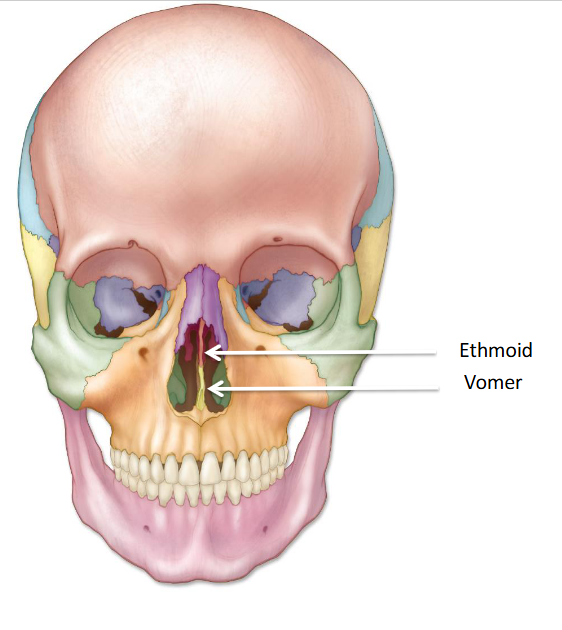
What is a part of the medial wall?
The medial wall includes the nasal septum, which is primarily formed by the vomer and ethmoid bones.
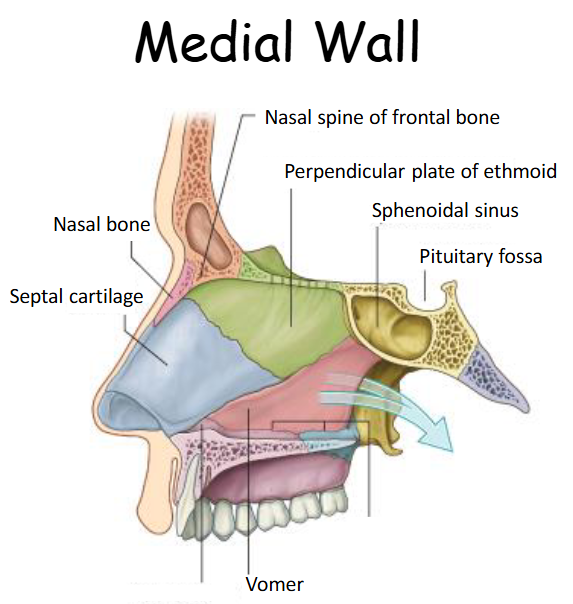
Why does the cribriform plate have lots of holes?
Cribriform plate has lots of hole The small hole allow for olfactory nerve axons to pass through, so that any air odours can be detected and relayed to the brain
What do perpendicular plates form?
Perpendicular plate forms a part of the nasal septum

What is a part of the upper airway?
The upper airways consists of the nose, nasal cavities, pharynx, larynx and trachea. These form a rigid conduit which conducts the airways into the thoracic region and are often referred to as the conducting zones. They function to filter particulate matter from air, and to warm and moisten the air that enters the body
What is a part of the lower airways?
The lower airways consists of the respiratory bronchioles, alveolar ducts and alveoli (all microscopic so there will be some histology to learn this week!). These structures are the sites of gas exchange and so are often referred to as the respiratory zones
Look at this diagram of the nasal concha/ meatus

Refer to this diagram of the openings of the nasal concha/ meatus
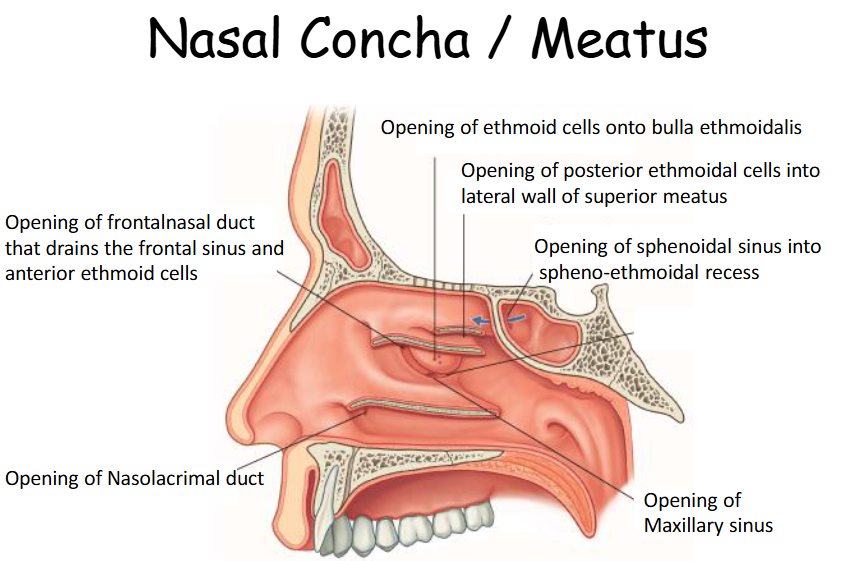
Where does the Sphenoidal sinus drain into?
Sphenoidal sinus – Drains into spheno-ethmoidal recess (Located posterior and superior to the superior concha
What structures drain into the Superior meatus
Posterior ethmoidal cells - Drains onto the lateral wall of the superior nasal meatus
What structures drain into the middle meatus?
Anterior ethmoidal cells – Drains into the ethmoidal infundibulum of the middle meatus
Middle ethmoidal cells - Drains into the ethmoidal bulla of the middle meatus
Maxillary sinus – Drains into the middle meatus in the floor of the hiatus the semilunaris
What Structure drains into the Inferior meatus
Nasolacrimal duct – Drains into the inferior meatus
What cell can over produce mucous and block the sinuses?
Goblet cells can over produce mucous and block the sinuses
What is the innervation of the nose?
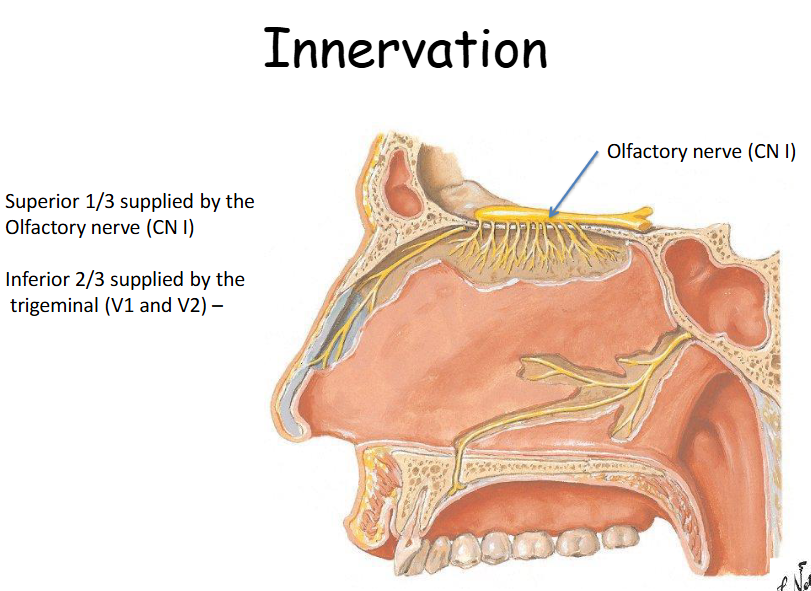
What is the bloody supply of the nose?
Sphenopalatine artery
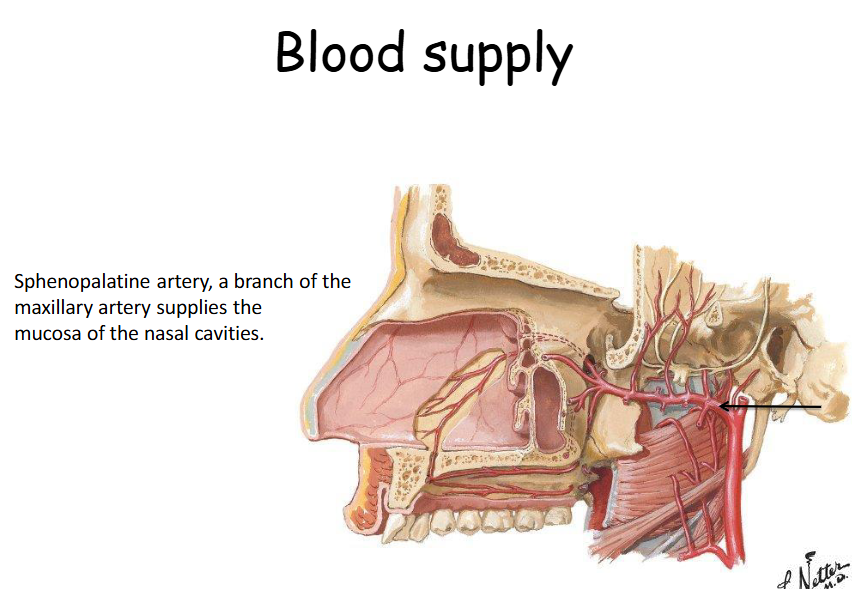
Identify the boundaries (including muscles) of the oral cavity and describe the functions of these regions
The oral cavity is bounded by the lips anteriorly, the cheeks laterally, the palate superiorly, and the tongue inferiorly. Its functions include ingestion, digestion, and articulation in speech.
What is the function of the oral cavity?
Ingestion of food
Chewing of food
Mixing of food with saliva
Digestion starts
Swallowing is initiated
Used in respiration
What are the 2 parts of the oral cavity?
Vestibule
Oral cavity proper
What are the boundaries of the oral cavity?
Superior – hard (maxillary and palatine) / soft palate (roof)
Anteriorly - Lips
Laterally – cheek -buccinator, most posterior of the lateral structures palatoglossal arches
Posterior – oropharynx
Inferior – epiglottis
Floor – mylohyoid
What are the 3 regions of the oral cavity?
• an anterior oral fissure (the opening to the outside of the body)
• a vestibule which sits between the lips and the teeth
• an oral cavity proper which sits between the maxillae and the mandible
How is the hard palate formed?
The hard component is known as the hard palate and is formed by the maxillae and palatine bones.
How is the soft palate formed?
The soft part is formed by the muscles of the soft palate or velum (hence the name soft palate).
What are the lateral walls formed by?
Formed most by soft tissues
Lips – orbicularis oris
Cheeks – buccinator muscle forms the vestibule
Palatoglossal arches
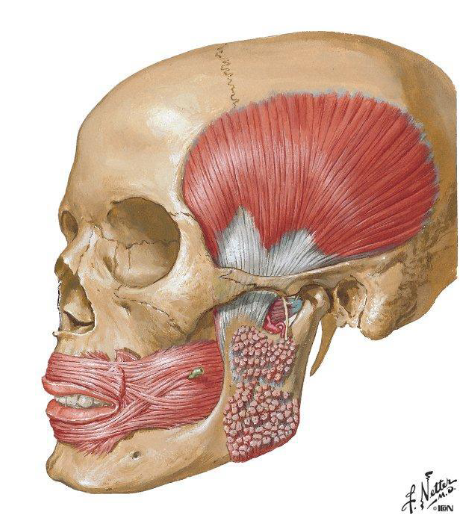
Look at the posterior wall diagram
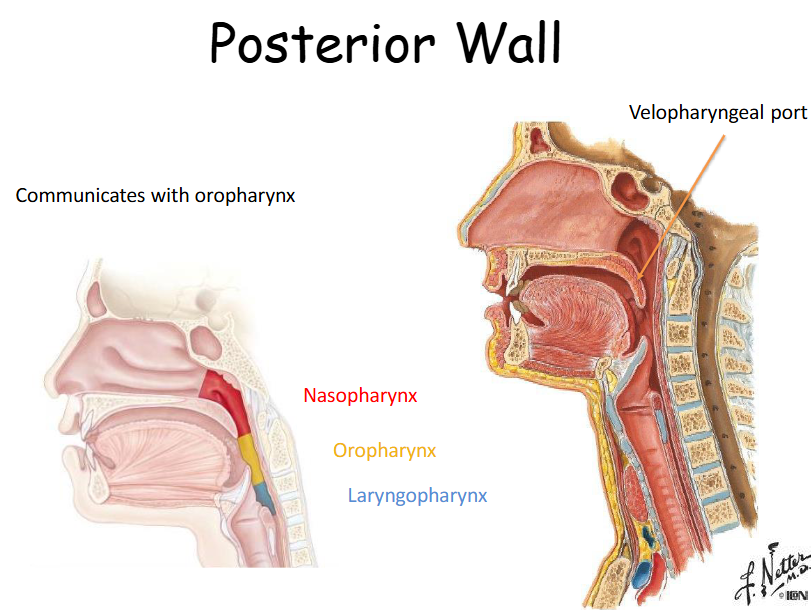
How is the floor of the mouth formed?
The floor of the mouth is also formed entirely of soft tissue and muscle.
Two important muscles lie here: the mylohyoid which is the thin sheet-like superficial muscle that forms the floor of the mouth and the geniohyoid, from which the muscles of the tongue and the muscles of the pharynx take some of their attachments.
This means the floor of the mouth is closely related to the tongue, pharynx and any associated movements.
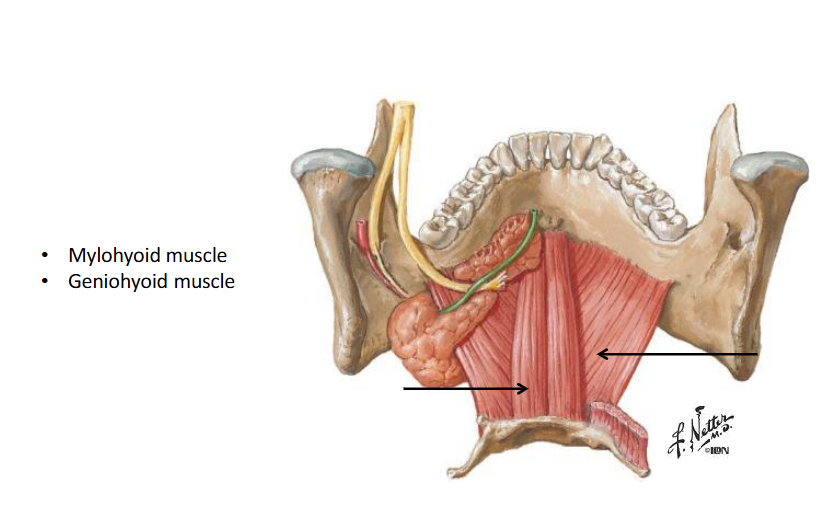
Look at the triangular aperture diagram
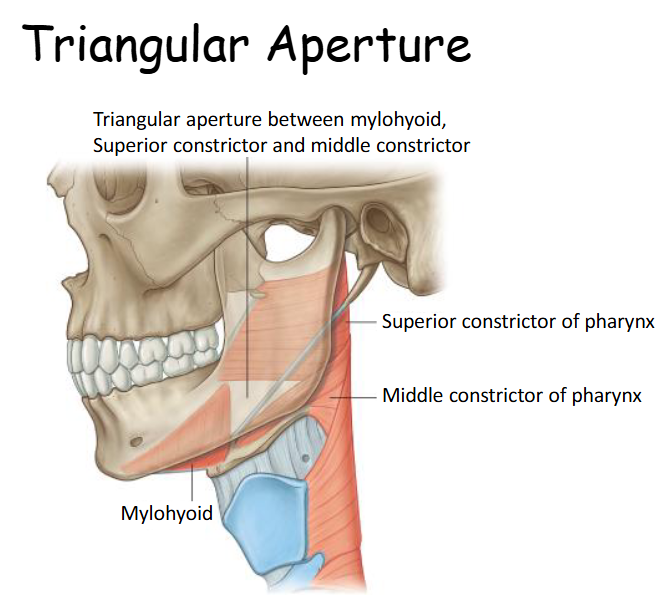
What is unique about the triangular aperture structure?
Due to the structure of the oral cavity a triangular shaped “hole” or aperture it lies between the mylohyoid, and some of the constrictor muscles of the pharynx which lie at the back of the oral cavity.
This space is an important communication route for nerves and vessels entering the oral cavity.
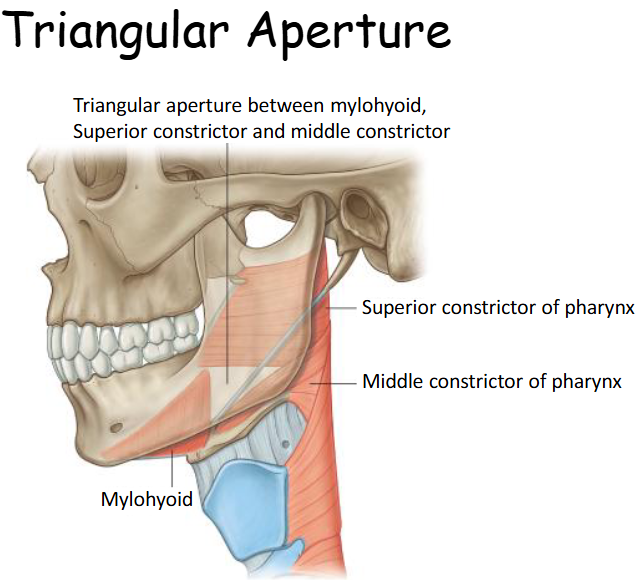
What are the 3 arteries that supply blood to the neck?
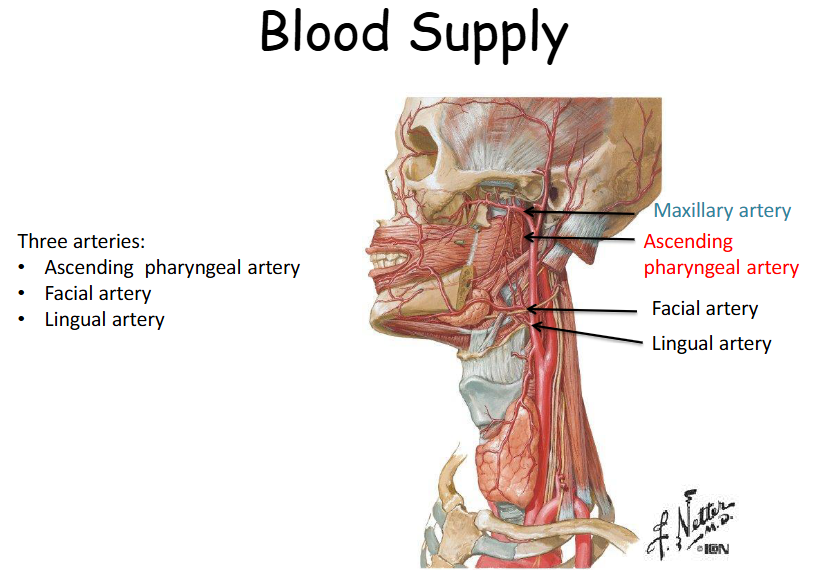
Describe how the oral and nasal cavities are relevant for Speech
Both cavities play crucial roles in producing sound, shaping resonance, and articulating speech through their anatomical structures and airflow.
How does abnormal resonance occur?
Abnormal resonance can occur if there is obstruction in one of the cavities, causing hyponasality – lack of nasal emission or if
there is velopharyngeal dysfunction (VPD), causing hypernasality – excess nasal emission.
What is bulbar palsy, the cause and symptoms?
Cause:
• Impairment of cranial nerves: IX, X, XI and XII
• Lower motor neuron condition
• Genetic
• Inflammation/infection
• Tumors
Symptoms:
Dysphagia – difficulty in swallowing
Difficulty in chewing
Dysphonia – defective use of voice
Dysarthria – difficultly in articulating words motor disorder (cranial nerves)